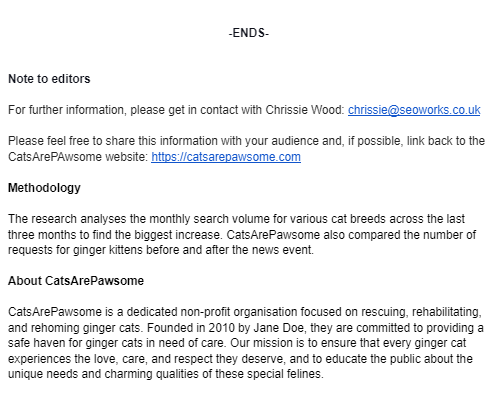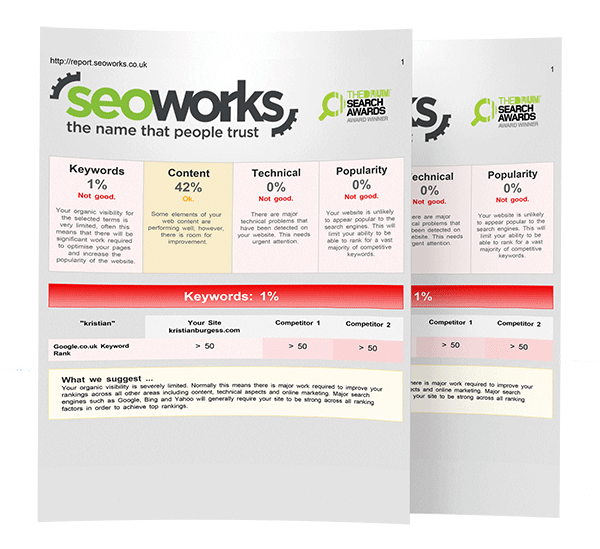How to Write a Press Release for Digital PR
Press releases are vital in Digital PR. Whether they accompany a long-form blog post or are stand-alone, press releases make key findings easily digestible for journalists and convey information quickly.
While traditionally, companies send press releases to announce business news, in Digital PR, press releases are part of a strategy to improve a brand’s awareness and a website’s SEO metrics.
Digital PR campaigns often insert a brand into a relevant and topical conversation to enhance their E-E-A-T (Experience, Expertise, Authoritativeness, and Trustworthiness) with brand mentions and links on suitable websites.
While gaining links and coverage has never been harder, the challenge starts with trying to tempt journalists into reading your pitch. So, a striking angle and high-quality article is a campaign must-have.
In this guide, we’ll discuss the basics of writing a press release, including structuring, style guidelines, and our top tips for maximising your campaign results.
Table of Contents

What’s the angle?
Before writing a press release, you need to know the angle. Ask yourself, what is the point of view of this article? What is the core message you want to get across? What is the reason behind writing this press release? Why would the target audience be interested in this?
The strongest angle of a piece can depend on the campaign’s format. If you’ve conducted original research, pulling out the most surprising statistic may be the leading angle. If you’ve based content on an expert’s opinions or advice, is there a stand-out quote you can lead with? Perhaps the campaign’s purpose or the person/company involved is the most fascinating aspect.
An easy way to narrow the angle down is to consider how you would describe the story to your friend in a nutshell. What would be the first part you mention? Unless you’re a terrible storyteller (and if so, I urge you to stop describing your dreams in minute detail), you’ll likely start with the most interesting part — this is how you begin writing a press release.
If you think your friend would respond with blank stares and a shrug to your lead angle, maybe go back to the drawing board. An angle should ideally stand out against the huge competition of Digital PR stories out there.
However, let’s be honest, not all campaigns can be jaw-dropping. If the results from your survey are lacklustre, you’re working around branding restrictions, or the topic is just not sexy, all is not lost. Can you rejig the data to make the lead angle more interesting? Can you link the story to a trending issue or news story? Can you alter the perspective of the content?
Angles may also differ depending on the audience you’re pitching. If you could approach your article with different demographics in mind, such as parents and students, you’ll likely benefit from writing a few different versions for the relevant publications.
Whatever your angle, just make sure you can back it up in the press release. We all know journalists are extremely busy, so any time spent considering your pitch should pay off. Your campaign won’t go far if it doesn’t align with the angle in the subject line.
How to Write and Structure a Press Release
Once you’ve determined your angle, ensure it’s front and centre in your press release, not buried and hidden. Lead with the most compelling part of your article, getting straight to the point and revealing the remaining information in order of importance.
Below we summarise a general press release template to stick to, ensuring you’re setting your story up for the best possible chance of success. Please keep in mind that press release structures can vary.
1) Headline
Keep the headline short and snappy to capture the story’s central point in as little detail as possible. For example, ‘Hero Cat Saves Baby Stuck in Tree!’ is enough to keep people scrolling to find more information. Who wouldn’t want to read this!?
Whereas, if the headline read ‘A Ginger Cat in Manchester Spotted Saving a Crying Baby From an Oak Tree’, the core information gets buried underneath filler words and adjectives.
While this strange event did not actually occur (as far as we know), imagine it did, and you’re doing the Digital PR for a pet charity. After some research into popular cat adoption statistics, you have a new story.
Headline example: Hero Cat Sparks Rise in Ginger Kitten Adoptions!
2) Lead sentence
Summarise more of the angle’s core components in the opening paragraph — this is where you could mention more about the miraculous actions of the cat.
The opening sentence isn’t to explain how you conducted the research, who your client is, or that the cat’s rescue mission was on a rainy Tuesday morning, but it’s for the most interesting part of the article.
It’s for the ‘what’ of the story — what is this story about?
Lead sentence example: A hero cat spotted saving a crying baby stuck in a tree has triggered a rise in ginger kitten adoptions across the UK, research reveals.
3) The Body
The second paragraph is often the most natural section to explain who is telling or involved in the story and why, with an emphasis on the why. Why is this story relevant? The ‘why’ of a story might be a world event, a topical issue, a national awareness day, current weather forecasts, or a pop culture event.
Why is the cat story relevant? It’s responding to a viral news story that everyone’s talking about.
In the following paragraphs or bullet points, explain the ‘when’, ‘how’, and ‘where’ of this story.
For example: When did the rise in cat adoption occur? How does this information relate to their readers? Where did this cat adoption trend occur?
The body of the press release should also include information that supports the lead angle, such as more research findings and quotes. Including quotes can increase your article’s authority and trust, whether they’re from an expert you’ve sourced, an executive at the company you’re writing for, or a case study from a human interest perspective.
Quote example: Jane Doe, a spokesperson for the animal charity CatsArePawsome, said: “This cat is unlike anything I had ever seen before in my life. Orange cats are known for being unusual, but the way he climbed the tree and picked up the baby like a kitten was miraculous.
“Many people have been in touch to adopt a ginger cat, hoping to find their own hero pet. However, the cat in this story is an anomaly, and everyone should remember that pet ownership is a big responsibility not to take lightly.”
Finally, after concluding your article, provide a call to action (CTA), such as linking to and telling readers where to find more information. However, ensure this CTA offers something to readers rather than just asking journalists to link to your website.
CTA example: Find out the top considerations for cat adoption here.
4) The Footer
The footer is the part where you can indicate the end of the press release and include any further relevant information.
Firstly, make it clear when the article has ended, with an ‘-ENDS-’ or ‘###’.
Then, include a ‘note to editors’ section for any relevant information journalists might need, such as research methodology and contact details.
Also, include a boilerplate — a paragraph of information about the company — underneath the ‘note to editors’ section.
Here is an example of how to write the footer:

Other key elements
Here are some other important aspects to keep in mind when writing a press release:
- Write everything in the third person except for the quotes. This point of view keeps your writing impartial and objective, making it more trustworthy and credible to journalists rather than suggesting the story is motivated by personal opinions.
- Include a dateline underneath the headline for when you released the information.
- Include an embargo date and/or time if necessary or ‘for immediate release’ at the top.
- Aim for around 500–700 words.
Other Tips for Writing a Press Release
Here are some specific writing tips to help your press release stand out to journalists:
DOs
- Prioritise proofreading, as spelling and grammar mistakes can make your content appear untrustworthy to journalists.
- Use active language instead of passive language in most cases to maximise engagement. For example, ‘a baby was saved by a cat’ is passive, while ‘a cat saved a baby’ is active. Active language immerses the reader in what happened, while passive language is often confusing and unclear.
- Mix up your sentence structure to help keep your reader’s attention.
- Provide imagery to save journalists a job but keep the file size small if including it in the body of the email and link to a larger-sized version they can download.
DON’Ts
- Don’t overcomplicate the language. Descriptive, fluffy, or playful language can be effective in a blog post, but when pitching to journalists, keep it simple.
- Avoid clickbait headlines if you can’t back them up.
- Avoid sales language. Unless the press release angle is business news, keep mentions of the brand to a minimum, otherwise, journalists will mistake your content for an advertorial and likely ask for a fee to cover.
- Avoid repeating the same words and phrases throughout as this can distract and disengage readers.
In Summary
After spending hours researching or quickly pulling a reactive story together, carefully consider how your press release can best present the findings. It’s the most important stage to get right if you want to grab the attention of journalists.
A poorly written press release can completely waste the effort and time you’ve already placed into the campaign. However, when structured properly and following best practices, press releases can persuade journalists to cover your story and effectively hit your Digital PR goals!
At The SEO Works, we offer professional Digital PR services and have worked with a wide range of businesses across different industries to deliver creative campaigns that get brands noticed online. To find out more or enquire, get in touch with our friendly team.

Chrissie is a Senior Digital PR Executive with a background in agency and in-house Digital PR, as well as SEO and journalism.

